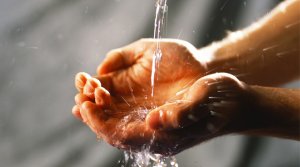Maintaining basic personal hygiene is vital in preventing the spread
of diseases most especially during emergency disaster situations. Although clean running water during such events becomes more of a luxury in such difficult times, it is one of the most essential things for maintaining proper hygiene which must be given priority by all working agencies during natural calamities.
Good personal hygiene is very essential especially in disaster emergencies such as floods, hurricanes, tornadoes and earthquakes. Although finding a clean, safe and uncontaminated water supply can be a challenge following the onset of such disasters. Below are important information to help ensure good personal hygiene in the event of a disaster emergency.
Hand washing as the most basic practice of personal hygiene
Being able to keep the hands clean during emergencies significantly helps in preventing germs and other microorganisms from spreading which can cause cross contamination and is considered the most basic form of personal hygiene. In the event that tap water is questionable or is not safe to use, only wash your hands with soap and water that has been disinfected of boiled for three to five minutes. Below are the universally accepted steps of proper hand washing:
- Wet both hands with clean, running water and lather with soap.
- Rub both hands together to make a lather and vigorously scrub palms, back of the hands, between fingers and under the nails.
- Continue rubbing both hands for a minimum of 20 seconds. You can estimate this by singing the “Happy Birthday” song twice which is more or less between the range of the minimum time for effective hand washing.
- Properly rinse both hands under running water and make sure no lather remains.
- Finish the process by drying both hands using a clean dry towel or if available a hand drier.

Personal hygiene is best manifested by frequent hand washing
Washing hands with soap and water should be done in the following instances:
- Before and after caring for a sick family member or a patient.
- Before and after doing wound caring.
- Before and during the preparation of food.
- Before partaking in meals.
- After sneezing, coughing or blowing one’s nose.
- After touching soiled materials or disposing pet and human waste.
- After using the toilet .
Bathing, dental care and wound care as part of good personal hygiene
Bathing in one of the most important hygiene practice which helps in preventing diseases. Regular bathing is further reinforced by the health sector as the secondary effective means to prevent the spread of diseases next to hand washing. Bathing following a water-related disaster should be practiced and must only be done with a clean and safe water. When in doubt of the local water supply has been contaminated, it is best to boil the water you need for bathing. In addition, dental hygiene is also very essential in preventing gum and teeth related diseases. Brushing one’s teeth after a water-related disaster should only be done using a clean and safe running water. Finally, wound care is also one of the other important aspects of good personal hygiene. Open cuts and wounds should be regularly washed with clean water and antiseptic solution to prevent the onset of infection. A small festering wound indicates a person’s poor regard to personal hygiene.
